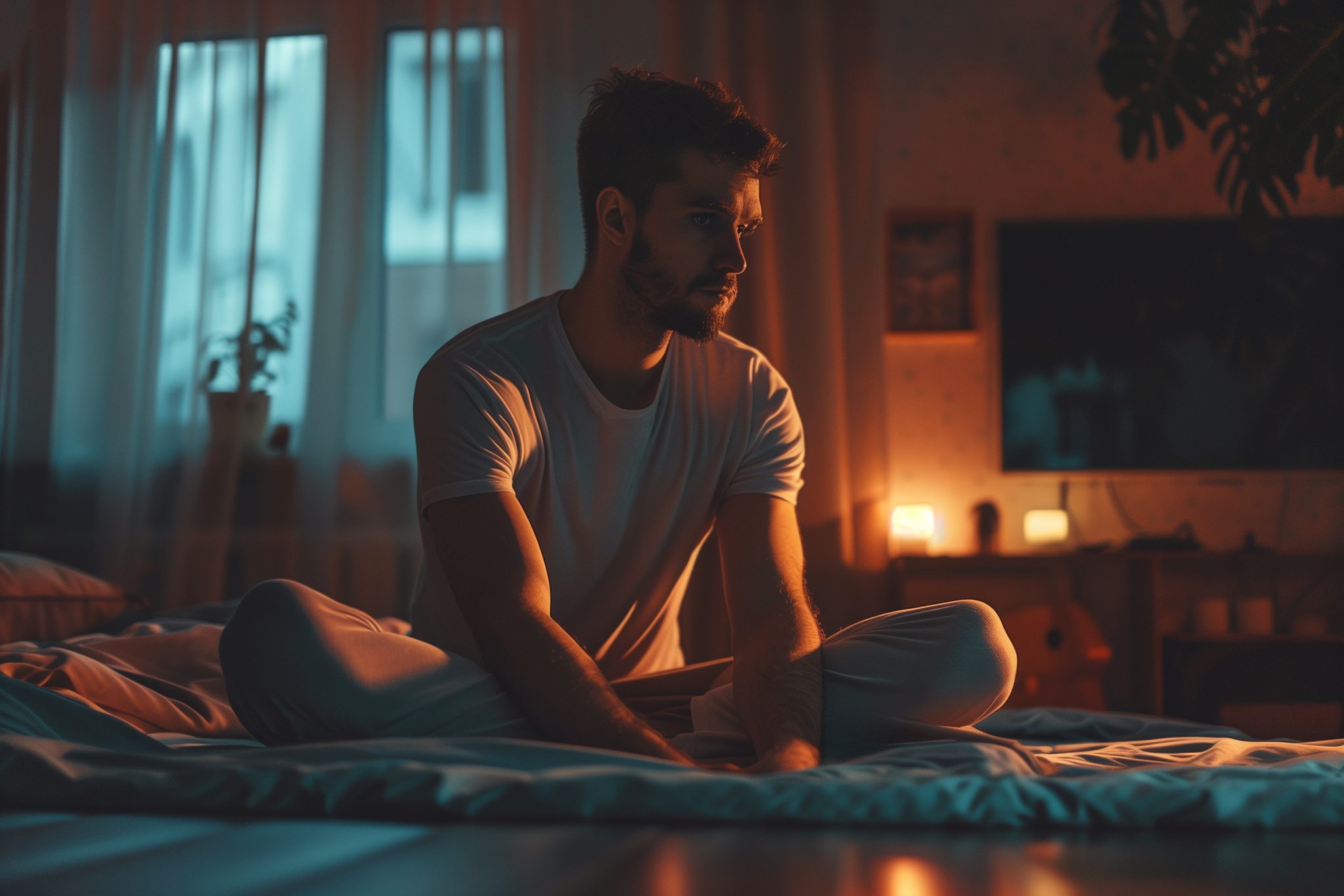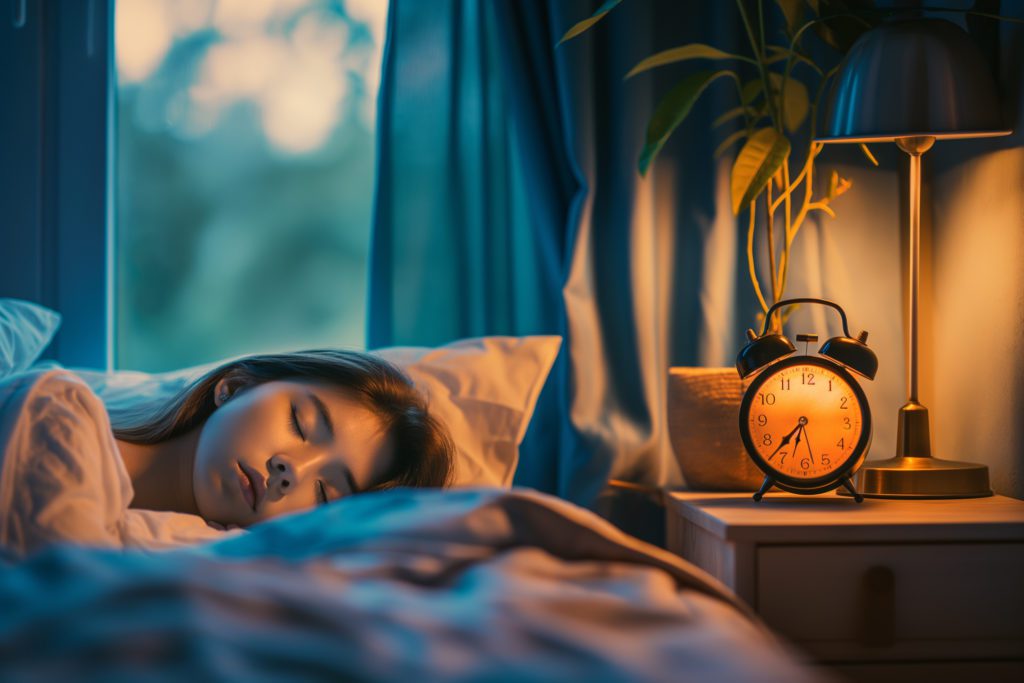
5 Bedtime Stretches to Prevent Leg Cramps During Sleep
Explore 5 effective bedtime stretches that target the prevention of painful nighttime leg cramps. Start your journey towards uninterrupted, restful sleep tonight.

Master these simple stretches for more restful nights
Nothing disrupts a good night’s sleep quite like the sharp jolt of a leg cramp. These sudden spasms can pull you out of the deepest slumber, leaving you to nurse sore muscles instead of catching Zs.
But there's hope on the horizon. Incorporating a few targeted stretches into your bedtime routine can help keep these cramps at bay. Stretching loosens up the muscles, enhances blood flow, and reduces the tension that can lead to cramps during the night.
In this post, we'll cover five easy stretches that you can do in the minutes before bed to help calm your muscles and set the stage for a restful night. Let’s explore these practical moves that promise to enhance your sleep quality.
What are leg cramps?
Leg cramps are those abrupt, intense episodes where your muscles unexpectedly tighten and cause significant pain. Here’s what’s going on: a muscle, usually in your calf, thigh, or foot, suddenly contracts and doesn’t relax. You're lying there, drifting into dreamland, and bam—your muscle hardens into a tight knot.
This involuntary contraction can grip you for a few seconds or linger painfully for minutes. Often triggered by factors like muscle fatigue, dehydration, or a lack of essential minerals such as potassium, calcium, or magnesium, these cramps can be a real pain in the leg.
While they’re mostly just a disruptive nuisance, frequent nighttime cramps could be alerting you to more serious conditions like peripheral artery disease or diabetes. The sheer unpredictability and severity of leg cramps not only ruin a good night’s sleep, but might also point to underlying health issues.
Stretches to prevent leg cramps
Studies suggest that incorporating stretches into your nightly routine can significantly reduce the frequency and intensity of leg cramps. Here are some that target the key muscle groups affected by cramps:
Calf stretch
This simple yet effective stretch targets the calf muscles, helping to reduce the common calf cramps that disrupt sleep. It specifically targets the gastrocnemius and soleus muscles in your calves, improving flexibility and circulation, and reducing the risk of cramping.
How to do it:
- Stand an arm's length from a wall.
- Place your right foot behind your left.
- Slowly bend your left leg forward, keeping your right knee straight and your right heel on the floor.
- Hold the stretch for 20 to 30 seconds, feeling a gentle pull in your right calf.
- Switch legs and repeat.
Hamstring stretch
Stretching your hamstrings can alleviate tightness and prevent cramps in the back of your thighs.
This stretch relaxes the hamstring muscles, reducing the strain and potential for spasms during the night.
How to do it:
- Sit on the floor with your right leg extended straight and your left leg tucked in.
- Reach forward towards your right foot with both hands without bending your knee.
- Hold for 20 to 30 seconds, feeling the stretch along the back of your thigh.
- Switch legs and repeat.
Quadriceps stretch
Keeping your quadriceps flexible can prevent cramps and tightness in the front of your thighs.
It targets the quadriceps muscles, helping to maintain their elasticity and prevent nocturnal cramping.
How to do it:
- Stand on your left foot, using a wall or chair for balance if needed.
- Bend your right knee and bring your heel towards your buttock.
- Grab your right ankle with your right hand and gently pull it closer to deepen the stretch.
- Hold for 20 to 30 seconds, ensuring you feel a gentle pull in the front of your thigh.
- Switch legs and repeat.
Hip flexor stretch
This stretch is aimed at the muscles at the front of your hip, crucial for maintaining proper posture and lower body mobility. Regularly stretching the hip flexors can relieve tightness and reduce the tension that often contributes to leg cramps at night.
This is especially beneficial if you spend a lot of time sitting throughout the day, as it helps lengthen and relax the hip muscles that can otherwise contribute to discomfort and cramping.
How to do it:
- Kneel on your right knee, place your left foot in front of you, bending at the knee to create a 90-degree angle.
- Push your hips forward, keeping your back straight. You should feel the stretch in the front of your right hip.
Hold the position for 20 to 30 seconds. - Switch sides and repeat.
Seated leg stretch
The seated leg stretch is great for targeting multiple areas at once, particularly the hamstrings and lower back. It helps to loosen the hamstrings and lower back, areas that can contribute to leg cramps if too tight, while promoting overall flexibility and reducing tension in the lower body.
How to do it:
- Sit on the floor with both legs stretched out in front of you.
- Keep your back straight and lean forward from your hips, reaching toward your toes with your hands.
- Hold the stretch for 20 to 30 seconds, feeling a gentle pull along the back of your legs and lower back.
- Release and repeat.
Integrate these stretches into your nightly routine and you can significantly lower the chances of experiencing painful leg cramps. If you're diligent with these stretches and maintain other preventive measures like hydration and balanced nutrition but still encounter frequent cramps, it's wise to seek medical advice. Sometimes, persistent cramps signal an underlying health issue that requires professional evaluation and treatment.
Additional tips for effectiveness
To maximize the benefits of these stretches, focus on deep, controlled breathing—inhale slowly through your nose and exhale through your mouth to increase oxygen flow and relax your muscles further.
Aim to hold each stretch for at least 20 to 30 seconds and repeat them at least twice. Incorporating these stretches into your bedtime routine daily is ideal for consistent results.
Additionally, using a sleep tracking app can help monitor how well these stretches are improving your sleep quality by noting any reduction in nighttime awakenings or disturbances.
Stretch your way to better sleep
Incorporating these stretches into your nighttime routine is a proactive step toward minimizing disruptive leg cramps and enhancing your overall sleep quality. Regular stretching not only improves flexibility but also helps calm the body, preparing you for a restful night.
Stay consistent with these practices, and you're likely to see significant improvements in sleep comfort and a reduction in cramp frequency. Make it a nightly ritual, and your body will thank you in the form of peaceful, uninterrupted sleep.

Written by
Georgia Austin
Professionally trained copywriter, editor, and content marketing strategist with over 7 years of experience—working with brands like Nike, Siemens, Toshiba, Tommy Hilfiger, Culture Trip, and Klook.
Download Pillow
Get help
Press & News
Legal
Connect
X (Twitter)
Company
Copyright © Neybox Digital Ltd.



